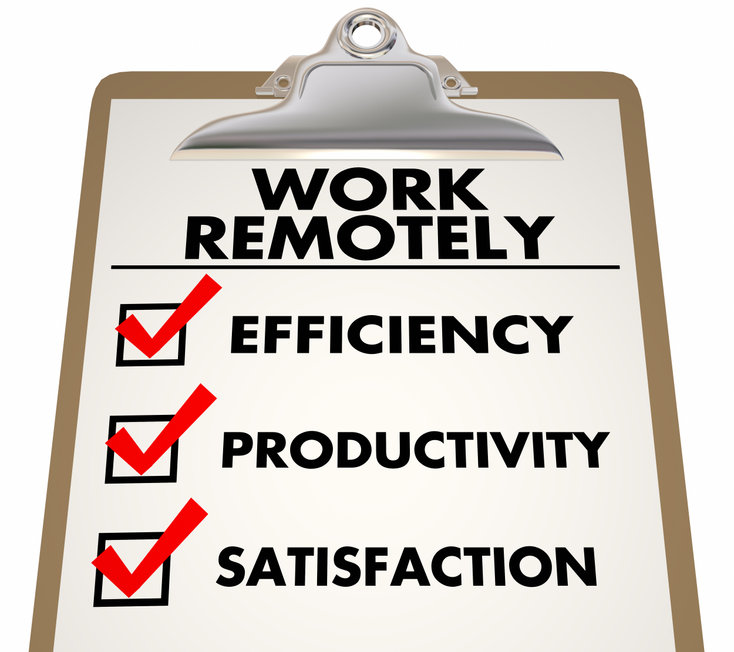
Remote work isn’t a new concept, but the COVID-19 pandemic accelerated our adoption of remote business options. This made the reality of working remotely a viable choice for organizations and employees alike. Despite this change, many industries still struggle to find the right balance between employee priorities, business goals and technological capabilities. These seven statistics show us the state of remote work for 2022 and beyond.
Remote Work Statistics

- Employees want to work remotely—forever.
Research shows that 97.6 percent of remote workers would like to work remotely, at least some of the time, for the rest of their careers. This hybrid style of work is becoming more and more popular as we transition from pre-pandemic work cultures. Hybrid work allows employees to collaborate meaningfully in-person when necessary while maintaining remote flexibility for the bulk of their schedule.
- Remote workers value flexibility.
Thirty two percent of remote workers say the ability to have a flexible schedule is the top benefit of remote work, followed by 25 percent who favor the flexibility to work from any location. Employees are looking for more and more flexibility in their work environments and schedules. Individuals are seeking improved work-life balance. For many, working remotely can result in more time with family, on hobbies, travel, other responsibilities or self-care. This desire for flexibility partially fueled the Great Resignation, with many individuals making the shift to freelance work. Further, remote employees save an average of 40 minutes daily from commuting, immediately adding several free hours to the week for other activities.
- Remote work can increase productivity.
A nine-month Stanford University study of 16,000 workers found that working from home increased business productivity by 13 percent when comparing the company’s profits to previous years. Prodoscore attributed a mid-pandemic increase in productivity by 47 percent to their remote workforce. Many employees, management and executives see this improvement in themselves and their peers due to fewer distractions and more autonomy in creating a feasible work schedule.
- Working remotely is more common in cities with high-income levels.
The viability of remote work is dependent on industry and type of job, but accessibility also plays a major role. Workers require a strong internet connection, home office equipment, technology for conferencing and collaboration and the physical space to work comfortably. Some companies provide necessary supplies for remote workers, but many expect employees to provide their own computers, printers, scanners, webcam or subscriptions to software such as Microsoft Office. While remote work may be desired by a majority of survey respondents, the financial viability of working remotely is largely dependent on individuals and companies alike.
- Remote work raises security concerns.
More than half (54 percent) of IT professionals say remote workers pose a greater security risk than traditional workers. One qualm about remote work involves increased cybersecurity risks across multiple personal or public networks and different devices. To address this concern, many companies provide security training and software for employees to protect their devices and information. That said, many professionals believe the risk and need to maintain security standards remains the same whether remote or in the office, and that increased security across home devices is a positive change.
- Many companies still prohibit working remotely.
Research shows that while remote work opportunities are still highly desired, 44 percent of companies worldwide don’t allow remote work. The pandemic proved that many organizations could make a swift transition to remote work with little investment in new resources. This is especially true in “desk job” industries such as technology, financial services or professional services. But companies that make the shift must undergo larger conversion processes or may consistently require in-person interaction between individuals or large equipment. While many individuals desire a shift to working remotely, the competition for remote jobs remains high. Face-to-face interactions and on-site work remain vital across many industries.
- A quarter of all U.S. jobs will be remote in 2022.
Data projections show that 25 percent of all jobs in North America will be remote by the end of 2022. The transition to remote work is well underway. This shift shows businesses are acknowledging advancements in technology and business culture, as well as addressing employee values. This trend is projected to continue into 2023 but indicates the number of remote job possibilities in the current market does not meet individual demand.
Steps Toward a Hybrid Workforce

It’s clear that the shift to remote work resonates with employees and can result in increased productivity for businesses. Not every business can shift to a fully remote model. Yet, the challenges of recent years proved our society and workforce are more agile than we anticipated. Certain departments and roles may continue to prioritize remote solutions, while others more readily return to in-person and hybrid solutions. A hybrid approach can balance varying needs throughout organizations and welcome a diverse workforce to collaborate across multiple channels.
